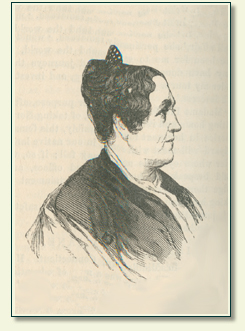|
|
|
|
|
|
|
The youngest of seventeen children, Almira Phelps received
much of her education in her family's house, where her siblings debated
literature and politics, and at the local district school. After traveling
around New England to study and teach, she returned to her hometown of When her first husband, editor Simeon Lincoln, died in
1823, Almira Phelps went to In 1831 she married John Phelps, the widowed father of one of her students, and together they moved around the country taking positions as teachers and administrators. Invited by the Episcopal Bishop of Maryland to take charge of the Patapsco Female Institute, Almira Phelps took the position and continued to teach there long after her second husband's death. Determined to teach her student's to resist the era's idealization of frail, helpless women, Almira Phelps taught her students not only the traditional feminine "accomplishments" of music and art, but also practical and moral lessons to prepare them for their domestic futures and "hard" academics such as history, mathematics, and natural science – at that time, subjects usually reserved for young men. Though she advocated quality education for women, she joined the Women's Anti-Suffrage Association and wrote numerous articles voicing her opposition to female enfranchisement. |
|
|
|


